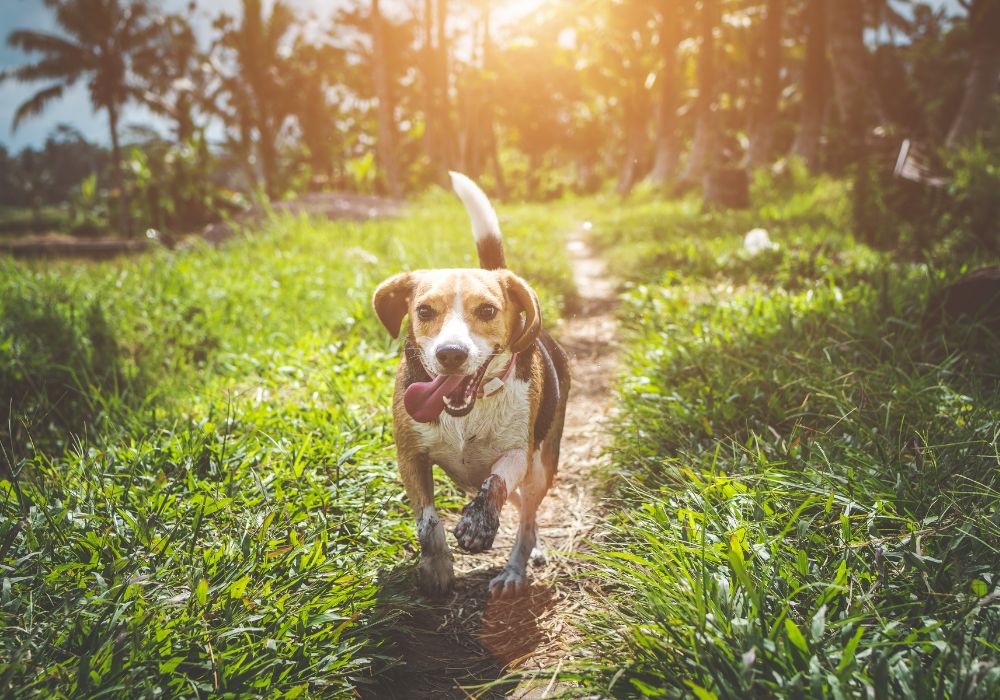
While panting is a normal behavior for dogs, excessive panting or gasping for air can be a sign of an underlying issue and require immediate attention. Here’s how to differentiate between normal panting and a potential emergency.
Dogs Breathe Through Their Nose, So Look Out for Excessive Panting
Dogs primarily breathe through their noses, similar to humans. Their noses are equipped with many important functions that make them the preferred breathing passage:
- Filtering: The nasal cavity contains hair and mucus that trap dust, allergens, and other airborne particles before they reach the lungs.
- Temperature regulation: As air passes through the nose, it is warmed or cooled depending on the environment, helping to regulate the dog’s body temperature.
- Olfaction: Dogs have an incredible sense of smell, and their noses are packed with scent receptors that allow them to explore their surroundings and gather information.
However, dogs may also breathe through their mouths in certain situations:
- Panting: When dogs are hot, exercising, or stressed, they pant to cool down by evaporating moisture from their tongue and respiratory tract. Panting primarily involves mouth breathing.
- Brachycephalic breeds: Dogs with shortened snouts, like pugs and bulldogs, have anatomically smaller nasal passages that can make breathing through their nose more difficult. They often rely on mouth breathing to compensate.
- Respiratory issues: Blockages in the nasal passages due to allergies, infections, or foreign objects can force dogs to breathe through their mouths.
- Excitement: During moments of intense excitement or play, dogs might temporarily switch to mouth breathing due to increased respiratory demands.
While some mouth breathing in dogs is normal, excessive or persistent mouth breathing can be a sign of an underlying health issue. If you notice your dog breathing primarily through their mouth, especially when at rest, it’s crucial to consult a veterinarian to rule out any potential problems.
Looking for pawsome adventures for your pup? At Dogsitwalk.com we capture their joy and ensure their safety with our customized dog walking and sitting services!
Normal Dog Panting:
- Occurs after exercise, playing, or feeling hot.
- Tongue is pink and moist.
- Breathing rhythm is steady and even.
- Gums are pink and healthy.
- Dog seems relaxed and alert.
Excessive Puppy Panting or Gasping:
- Happens unexpectedly or at rest.
- Tongue is dry, pale, or bluish.
- Breathing is labored, rapid, or shallow.
- Gums are pale, red, or bluish.
- Dog seems distressed, restless, or lethargic.
- Shows other symptoms like coughing, wheezing, drooling, or weakness.
Possible causes of excessive panting or gasping in dogs:
- Heatstroke: This is a life-threatening emergency. Symptoms include excessive panting, glazed eyes, vomiting, and high fever. If you suspect heatstroke, immediately move your dog to a cool place, wet their fur, and seek veterinary help urgently.
- Respiratory problems: Asthma, allergies, pneumonia, and other respiratory issues can cause difficulty breathing and panting.
- Pain: Pain from injuries, internal issues, or other causes can lead to panting.
- Heart problems: Congestive heart failure and other heart issues can affect breathing and cause panting.
- Foreign object: Something stuck in your dog’s throat or airways can cause gasping and difficulty breathing.
- Stress or anxiety: Panting can be a sign of stress or anxiety in some dogs.
What to do if your dog is panting or gasping:
- Stay calm and assess the situation. Look for other symptoms and try to determine the possible cause.
- If your dog is in distress, gasping for air, or showing other alarming signs, seek immediate veterinary attention. Do not wait!
- If the panting is mild and not accompanied by other concerning symptoms, monitor your dog closely and contact your veterinarian for advice.
Remember, it’s always better to err on the side of caution and seek professional help if you’re unsure about your dog’s panting or gasping for air. Your veterinarian can diagnose the underlying cause and provide appropriate treatment.

Leave a Reply